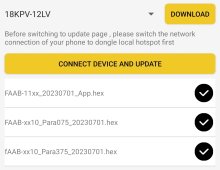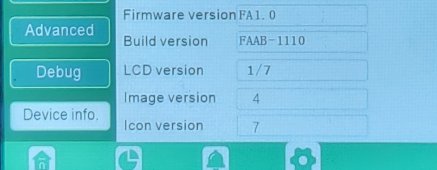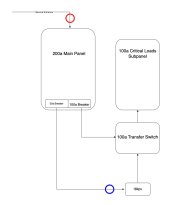My 18kpv arrives tomorrow and based on the ongoing conversation I'd like to ensure I fully understand the proper CT placement. My current goal seems to be that of the majority of other users here. I intend to NEVER feed power back to the grid, however I will have the grid connected to the input of my 18kpv as shown in the diagram below. My question is whether I should be placing my CTs inside my main panel, or inside the inverter where it is being fed from the main panel?
I can potentially see this both ways, scenario 1: keeping them at the main panel allows for the 18kpv to 'backed' my main panel if my critical loads panel isn't pulling as much power as I'm creating. IE it's noon, my batteries are full, sun is out and I have 4kw of solar doing nothing, but I turn my electric dryer on which is connected to the main panel. Seemingly the inverter could sense this and allocate the 4kw to head upstream to the main panel (at least this is my understanding). Consequence there would be the dryer shutting off and boom, you've got a pretty fair amount of power likely to backfeed.
Scenario 2 (what I assume is safest): CTs inside the inverter, all settings set to never backfeed grid. If a situation arrises that the inverter doesn't function as we all are hoping, I would hope that the power being "accidentally" backfed to the main panel would have a decent chance of being "absorbed" by the loads in my main panel prior to exiting through the service entrance wires. I'm planning to strategically place the 50a breaker at the bottom of the panel, thus in theory it must move through the entire bus bar without finding a home before leaving, if that makes sense.
Can someone confirm what would be considered the "correct" way to install my CTs? Red circle being CTs at main entrance, blue circle being CTs at inverter
View attachment 156888







